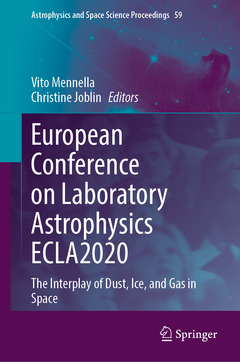Description
European Conference on Laboratory Astrophysics ECLA2020, 1st ed. 2023
The Interplay of Dust, Ice, and Gas in Space
Astrophysics and Space Science Proceedings Series, Vol. 59
Coordinators: Mennella Vito, Joblin Christine
Language: English
Subjects for European Conference on Laboratory Astrophysics ECLA2020:
Keywords
Astrochemistry; Exoplanet; Infrared astronomy; Interstellar matter; Gas-phase reactivity; Stardust; Gas-grain/surface reactivity; Molecular excitation and relaxation processes; Spectroscopy; Formation of prebiotic molecules on planetary surfaces; Atmosphere-surface coupling; Star and planetary formation; Solar System objects; Radioastronomy; planetary nebulae and supernovae; Mass spectrometry; Large beamlight facilities; Quantum chemistry calculations; Chemical modelling
335 p. · 15.5x23.5 cm · Hardback
Description
/li>Contents
/li>Comment
/li>
This book provides researchers and graduate students with a valuable account of the current state of this fascinating discipline.
Contains the proceedings of a conference on laboratory astrophysics
Provides an update on outstanding results in this research field
Relies on laboratory astrophysics activities and chemical modeling
These books may interest you

Laboratory Astrophysics 126.59 €

Laboratory Astrophysics 126.59 €

Observational Astrophysics 121.31 €

